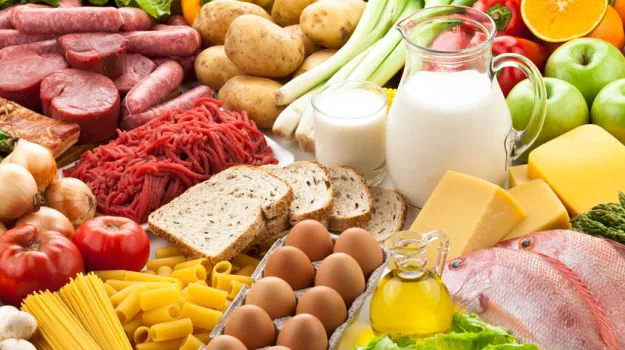What is low carb diet?
A low carb diet is one that restricts carbohydrate intake, which is primarily found in sugary foods, pasta, and bread. Instead, the focus is on consuming protein-rich whole foods and vegetables.
Numerous studies have shown that low-carb diets can result in significant weight loss and improvements in various health markers, such as blood sugar and cholesterol levels. These diets have been widely used for decades and are frequently recommended by healthcare professionals.
One of the advantages of low-carb diets is that there is usually no need to count calories or purchase special products. The emphasis is on eating whole foods that provide a complete, nutritious, and satisfying diet.
Explore more about low-carb diets and how they can help you achieve your personal health goals below.
What is Low Carb Eating
But what exactly does low-carb eating entail? Low-carb eating involves significantly reducing the consumption of foods that are high in carbohydrates, such as bread, pasta, rice, and sugary snacks. Instead, the focus shifts to consuming more proteins and healthy fats. This dietary approach aims to decrease the body’s reliance on carbohydrates for energy, thereby encouraging the use of fat as the primary energy source.
By limiting carbohydrate intake, the body enters a metabolic state known as ketosis, where it burns fat for fuel instead of glucose. This can lead to various health benefits, including weight loss, improved blood sugar control, and better overall health. Many individuals adopt low-carb eating to achieve specific health goals, such as reducing body fat, stabilizing blood sugar levels, and lowering the risk of chronic diseases.
The Importance of Low Carb Eating as a Beginner

You might wonder, what is the importance of low-carb eating? How is it different from consuming other types of foods? The difference lies in the focus on reducing carbohydrate intake and increasing the consumption of proteins and healthy fats. With low-carb eating, you minimize foods high in carbohydrates, such as bread, pasta, and sugary snacks, and instead emphasize protein-rich foods and healthy fats like nuts, seeds, and extra virgin olive oil, avoiding oils high in omega-6 fats. Avocados, which are a plant-based source of healthy fats, also play a significant role.
This approach can make it easier for beginners to make and stick to healthier dietary choices. By reducing carbs and increasing proteins and healthy fats, you can stabilize your blood sugar levels, reduce cravings, and feel fuller for longer periods. This not only aids in weight management but also contributes to overall health improvements.
Moreover, low-carb eating can lead to better metabolic health by reducing insulin resistance and promoting the use of fat as the primary energy source. This dietary pattern can help prevent chronic diseases such as type 2 diabetes and heart disease. It also encourages the consumption of whole, unprocessed foods, which are generally more nutrient-dense and beneficial for your health.
Types Of Low Carb Diets

Ketogenic Diet (Keto)
The Ketogenic Diet, commonly known as Keto, is characterized by an extremely low intake of carbohydrates, typically only 5-10% of daily caloric intake. This drastic reduction in carbs shifts the body into a metabolic state called ketosis, where it primarily burns fat for energy instead of glucose. The diet includes moderate protein consumption and a high intake of healthy fats. Foods commonly consumed on a Keto diet include meats, fish, eggs, dairy, oils, and non-starchy vegetables.
Atkins Diet

The Atkins Diet also begins with a very low carbohydrate intake but gradually allows for an increase in carbs over time. This diet is structured into four phases:
- Induction: The initial phase, where carb intake is significantly reduced to kickstart weight loss.
- Balancing: Gradually reintroduces certain carbs, like nuts and berries, while continuing to lose weight.
- Fine-Tuning: Further increases carb intake as you approach your weight loss goals.
- Maintenance: Once the desired weight is achieved, carb intake is adjusted to maintain the weight.
The Atkins Diet focuses on whole, unprocessed foods that are similar to what our ancestors consumed. It eliminates grains, legumes, and dairy, which naturally reduces carbohydrate intake. While not as strictly low-carb as the Keto diet, it encourages a lower carb intake compared to typical dietary patterns. This approach aims to stabilize blood sugar levels, reduce cravings, and promote long-term health.
The Atkins Diet emphasizes the consumption of protein-rich foods, healthy fats, and a variety of vegetables, promoting a balanced and nutrient-dense approach to eating. This method allows individuals to adapt gradually to a lower carbohydrate intake, making it more sustainable for long-term health and weight management.
Paleo Diet

The Paleo Diet, also known as the Paleolithic or Caveman Diet, is based on the idea of eating foods that our ancient ancestors would have consumed. This means focusing on whole, unprocessed foods and eliminating modern agricultural products such as grains, legumes, and dairy. The diet is rich in lean meats, fish, fruits, vegetables, nuts, and seeds, which are believed to be more aligned with our genetic makeup and, therefore, healthier.
| Diet Type | Description | Key Features |
|---|---|---|
| Ketogenic Diet | Very low in carbs (typically 5-10% of daily intake), high in fats, moderate in proteins. | Induces ketosis, where the body burns fat for energy. |
| Atkins Diet | Divided into phases (induction, balancing, fine-tuning, maintenance) to gradually increase carb intake. | Initially very low carb, with phases adding carbs over time. |
| Paleo Diet | Focuses on whole, unprocessed foods similar to what our ancestors ate. | Eliminates grains, legumes, and dairy, naturally reducing carb intake. |
These diets are popular for their varying approaches to reducing carbohydrate intake while promoting health benefits such as weight loss, improved blood sugar control, and increased energy levels.
How Do You Start With a Low Carb Eating Habit?

First, start out with your daily intake of low carb. The beginner must start out very cautious. You do not want to throw your body into chaos because of this new approach to your carbohydrate intake. Recommendation is made that a daily intake of 80 to 240 calories be consumed. Your next approach is to identify each day the low carb foods that you are going to consume. Consume proteins such as beef, pork, lamb, veal, chicken, turkey, duck, salmon, trout, sardines and mackerel.
For seafood, consume shrimp, crab, lobster or clams. Whole eggs or egg white. Remember that your fruits and vegetables are super important in your low carb eating habits. Vegetables like your leafy ones, cruciferous vegetables and others are non starchy so they will fit immensely in your low carb eating habits.
Your energy level will now be increased by your fat intakes so go ahead and consume foods that are high in fat. For example, assorted cheese, assorted cream such as heavy or sour cream and full-flat or plain Greek yogurt. The choices are there for you to mix and decide on. These types of fats will give you the energy you need to take you through a productive day without the numerous pros that come with a diet rich in carbs. Do not forget to stay hydrated. Oh! Not to say you cannot snack in between your low carb eating but, eat healthy. Snack on your vegetable and cheese sticks, and nuts.
Proteins to Include

Meat and Poultry
Consume proteins such as beef, pork, lamb, veal, chicken, turkey, duck, salmon, trout, sardines, and mackerel. These options provide the necessary protein for muscle maintenance and overall health.
Seafood
For seafood, include shrimp, crab, lobster, or clams. These are excellent sources of protein and other essential nutrients.
Eggs
Whole eggs or egg whites are versatile and nutrient-dense, fitting well into a low-carb diet.
Vegetables and Fruits in a Low-Carb Diet

Leafy Greens
Leafy greens like spinach, kale, and arugula are low in carbs and high in vitamins and minerals.
Cruciferous Vegetables
Cruciferous vegetables, such as broccoli, cauliflower, and Brussels sprouts, are non-starchy and perfect for a low-carb diet.
Low-Carb Fruits
Fruits like berries, avocado, and olives are lower in carbs and can be included in moderation.
Healthy Fats for Energy
Assorted Cheeses
Cheeses such as cheddar, mozzarella, and blue cheese provide healthy fats and protein.
Creams and Yogurts
Heavy cream, sour cream, and full-fat plain Greek yogurt are great sources of healthy fats.
Nuts and Seeds
Nuts and seeds like almonds, walnuts, and chia seeds offer healthy fats, fiber, and protein.
Staying Hydrated
Staying hydrated plays a critical role in maintaining a healthy low-carb diet. While water is essential and should be the primary beverage choice, there are several other low-carb drink options that can complement hydration efforts.
- Water: Water is fundamental for overall health and is especially important on a low-carb diet. It helps maintain bodily functions, aids digestion, and supports metabolism. Aim to drink at least 8 glasses (64 ounces) of water per day, or more if you’re physically active or in a hot climate.
- Herbal Teas: Herbal teas are excellent alternatives to plain water, offering hydration without any added sugars or carbs. Popular choices include peppermint, chamomile, ginger, and green tea. These teas not only hydrate but also provide antioxidants and other health benefits.
- Flavored Water (without added sugars): Flavored water can provide a refreshing change from plain water while remaining low in carbs. Look for options that are naturally flavored or infused with fruits and herbs without added sugars or artificial sweeteners. You can create your own infused water by adding slices of cucumber, lemon, lime, berries, or mint to a pitcher of water.
- Electrolyte Drinks: Electrolyte drinks can be beneficial, especially if you’re experiencing symptoms like fatigue or muscle cramps, which can sometimes occur during the initial stages of a low-carb diet. Look for electrolyte drinks that are low in sugar and carbs or consider making your own using electrolyte powders or tablets mixed with water.
- Broth: Broth, such as chicken or beef broth, is hydrating and can also help replenish electrolytes. It’s a comforting option, particularly during colder weather or when you’re feeling under the weather.
- Coconut Water (in moderation): Coconut water is naturally low in carbs and provides electrolytes like potassium, making it a suitable choice for hydration. However, be mindful of its natural sugars and consume it in moderation.
When choosing beverages on a low-carb diet, it’s essential to read labels carefully to avoid hidden sugars or high-carb content. Opting for water as your primary beverage and incorporating these low-carb alternatives can help you stay properly hydrated while supporting your overall health and wellness goals.
Healthy Snacking Options
Vegetable and Cheese Sticks
Snack on vegetable sticks with cheese for a satisfying, low-carb option.
Nuts and Seeds
A handful of nuts or seeds can provide a quick and nutritious snack.
Low-Carb Dips
Use dips like guacamole, salsa, or hummus with your vegetable sticks for added flavor.
Embarking on a low-carb eating journey can be a rewarding experience, offering numerous health benefits and a new perspective on food. As a beginner, it’s essential to start with a clear understanding of what low-carb eating entails and how to implement it into your lifestyle. By focusing on whole, unprocessed foods and learning to manage common challenges, you can successfully transition to a low-carb diet. Remember, consistency is key, and every small step towards your goal is progress. Use this guide on low-carb eating for the beginner as a resource to help you navigate your way to a healthier, more balanced way of eating.
Frequently Asked Questions
- What are the benefits of a low-carb diet?
- A low-carb diet can help with weight loss, improved blood sugar control, enhanced mental clarity, and increased energy levels.
- How quickly can I see results on a low-carb diet?
- Results vary from person to person, but many people start to see changes within a few weeks.
- Can I eat fruits on a low-carb diet?
- Yes, but stick to low-carb fruits like berries, avocados, and olives in moderation.
- Is it normal to feel tired when starting a low-carb diet?
- Some people experience fatigue during the initial phase as the body adjusts to burning fat for energy. This usually passes within a few days.
- Can I follow a low-carb diet if I’m vegetarian or vegan?
- Yes, you can follow a low-carb diet as a vegetarian or vegan by focusing on plant-based proteins, nuts, seeds, and low-carb vegetables.
References
Westman, E. C., Phinney, S. D., & Volek, J. S. (2007). The New Atkins for a New You: The Ultimate Diet for Shedding Weight and Feeling Great. Touchstone.
- This book provides an in-depth look at the Atkins Diet, offering practical advice and scientific explanations.
Ludwig, D. S. (2016). Always Hungry? Conquer Cravings, Retrain Your Fat Cells, and Lose Weight Permanently. Grand Central Life & Style.
- Dr. Ludwig’s book discusses the benefits of reducing carbohydrate intake and provides strategies for incorporating more fats and proteins.
Cordain, L. (2010). The Paleo Diet: Lose Weight and Get Healthy by Eating the Foods You Were Designed to Eat. Houghton Mifflin Harcourt.
- This book explains the principles of the Paleo Diet and its natural reduction in carbohydrate consumption.
Taubes, G. (2007). Good Calories, Bad Calories: Fats, Carbs, and the Controversial Science of Diet and Health. Knopf.
- Taubes’ work explores the science behind low-carb diets and their health benefits.
Noakes, T., Creed, S., Proudfoot, J., & Grier, D. (2017). The Real Meal Revolution: The Radical, Sustainable Approach to Healthy Eating. Robinson.
- This book offers recipes and guidance for those starting a low-carb, high-fat diet.
Volek, J. S., & Phinney, S. D. (2011). The Art and Science of Low Carbohydrate Living: An Expert Guide to Making the Life-Saving Benefits of Carbohydrate Restriction Sustainable and Enjoyable. Beyond Obesity LLC.
- This guide covers the science and practical aspects of maintaining a low-carb lifestyle.
Hallberg, S. J., & McKenzie, A. L. (2019). Low-Carb Diets for Diabetes Control: From Outlier to Mainstream. Current Opinion in Endocrinology, Diabetes, and Obesity, 26(2), 93-100.

